Exploring the Complexities of Cancer Treatment: Is There A Cure?
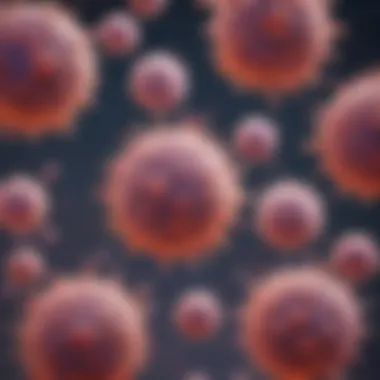
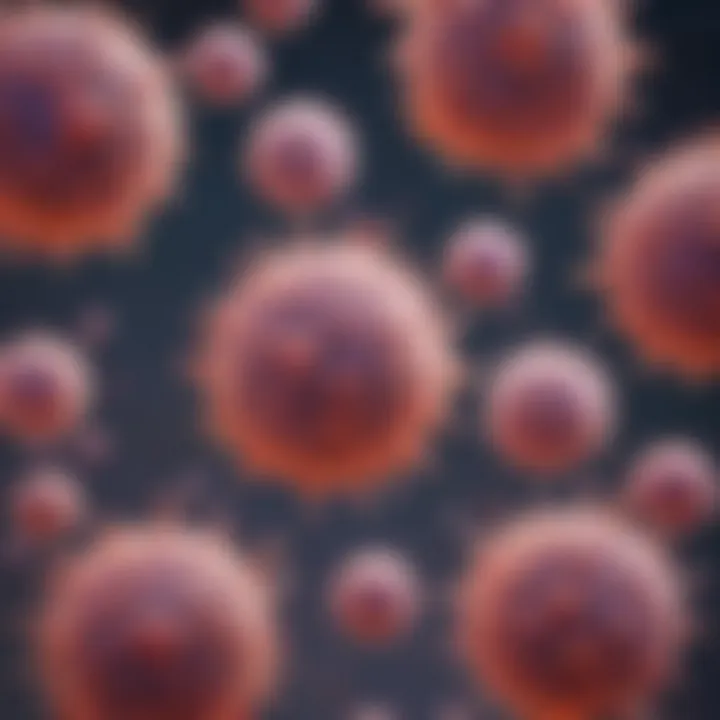
Intro
Cancer remains one of the leading causes of death worldwide. Its complexity requires a multifaceted approach in treatment and management. The question of whether a definitive cure exists is fraught with significant implications. Understanding cancer treatment demands awareness of the types of cancer, the therapies available, and patient response variability. A comprehensive grasp of these elements is crucial for both clinicians and patients alike.
Article Overview
Purpose of the Article
This article aims to dissect the intricate world of cancer treatment. By delving into current modalities and ongoing research, it seeks to determine whether a truly effective cure for cancer can be achieved. The focus will not only be on treatments but also on the journey of personalized medicine, highlighting how individual patient responses affect outcomes.
Relevance to Multiple Disciplines
Cancer treatment intersects numerous fields. Medicine, pharmacology, psychology, and public health all play significant roles in understanding and addressing this complex disease. Insights from diverse disciplines enrich the discourse on cancer treatment and potentially foster innovative solutions.
Research Background
Historical Context
The history of cancer treatment dates back thousands of years. Early initiatives were primarily surgical, progressing to the introduction of radiation and chemotherapy in the 20th century. Each era of treatment revealed more about cancer's biology and the need for systemic approaches.
Key Concepts and Definitions
Before exploring treatment options, it is essential to clarify terms:
- Oncology: The branch of medicine that deals with cancer.
- Chemotherapy: A treatment method using drugs to destroy cancer cells.
- Radiation Therapy: The use of high-energy particles or waves to destroy or damage cancer cells.
- Immunotherapy: A treatment that uses the body’s immune system to fight cancer.
Understanding these fundamental concepts lays the groundwork for evaluating the effectiveness of various treatments and the ongoing advancements in the field.
"The fight against cancer is complex, involving not just medicine, but patient care, emotional support, and continual research."
"The fight against cancer is complex, involving not just medicine, but patient care, emotional support, and continual research."
This summary encapsulates both the challenges and the evolving nature of cancer treatment, emphasizing the importance of ongoing inquiry and innovation in finding potential cures.
Preface to Cancer Research
Cancer research plays a pivotal role in enhancing our understanding of this multifaceted disease. The continuous study of cancer provides insights that inform treatment strategies and patient care. As the prevalence of cancer rises globally, research becomes even more vital. By investigating not just the disease itself but also the underlying mechanisms, researchers seek to unravel the complexities that define cancer pathogenesis.
The significance of historical progress in cancer treatment cannot be overstated. It informs current methodologies and highlights the advancements made over decades. This helps pinpoint effective strategies while addressing weaknesses in earlier treatments.
Simultaneously, the current state of cancer research showcases the incredible advancements made through innovations in technology and methodology. Researchers are employing genetic studies, advanced imaging techniques, and computational biology tools to dissect cancer at a molecular level. These efforts aim to improve diagnostic precision and refine existing therapies. By understanding the nuances of tumors and their microenvironments, tailored treatments are emerging to combat specific cancer types.
In sum, the realm of cancer research is foundational. It encompasses past experiences and present efforts aimed at developing comprehensive approaches to cancer treatment. The continued exploration of cancer not only aims to find a cure but also enhances the quality of life for those affected.
Understanding Cancer
Understanding cancer is crucial for several reasons. Cancer remains one of the leading causes of mortality worldwide, making its study essential in both scientific and clinical contexts. Grasping the various aspects of cancer helps in the development of effective treatment strategies. It also enables better patient care and informs public health policies aimed at prevention and early detection.
A well-rounded understanding of cancer encompasses the definitions, classifications, and biological mechanisms involved in tumor development. Clarity on these subjects can assist researchers and practitioners alike in their efforts to diagnose and treat different cancer types more effectively.
What is Cancer?
Cancer is a group of diseases characterized by the uncontrolled division of abnormal cells in the body. Unlike normal cells, which grow and divide in an orderly fashion, cancer cells do not follow these rules. They can invade surrounding tissues and spread to other parts of the body, a process known as metastasis. This invasive behavior distinguishes cancer from benign tumors, which do not spread and remain localized.
The urgency in understanding cancer stems from its complexity and the variability of its manifestations across different individuals. Each person's genetic makeup, lifestyle, and environment can contribute uniquely to their disease, making a generalized approach inadequate. Therefore, defining cancer precisely is essential for developing targeted therapies and finding potential cures.
Types of Cancers
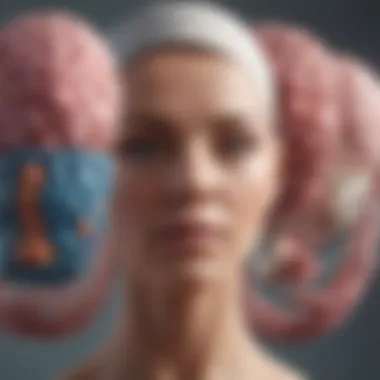

Cancers can be categorized into several types based on the origin of the tumor. Here are some major categories:
- Carcinomas: Cancers that originate in the skin or tissues lining internal organs. This group includes breast, lung, and prostate cancers.
- Sarcomas: These originate in connective tissues, such as bone, cartilage, fat, and muscle.
- Leukemias: Blood cancers that arise from bone marrow and affect the production of blood cells.
- Lymphomas: Cancers that begin in lymphatic tissues, such as lymph nodes and the spleen.
- Melanomas: Cancers that develop in melanocytes, the cells responsible for skin pigmentation.
Each type presents different challenges in terms of treatment and management. Understanding the specific characteristics and behaviors of these cancer types is vital for effective therapeutic approaches.
Cancer Biology and Mechanisms
Delving into the biology of cancer involves understanding the cellular, molecular, and genetic changes that lead to tumor formation. Cancer can arise through genetic mutations that affect cell cycle regulation, DNA repair, and apoptotic pathways. Some important mechanisms include:
- Oncogenes: Genes that, when mutated or overexpressed, promote cell growth and division. Their activation can drive cancer progression.
- Tumor Suppressor Genes: These normally inhibit cell proliferation. Mutations in these genes can lead to unchecked cellular growth.
- Angiogenesis: The process through which tumors develop their own blood supply, facilitating growth and metastasis.
- Tumor Microenvironment: This includes surrounding cells, blood vessels, and signaling molecules that can influence tumor behavior.
Understanding the biological complexities is not just academic; it is essential for advancing treatment options and discovering potential cures for cancer. Research-focused efforts aim to unravel these mechanisms, providing a clearer pathway towards targeted therapy and personalized medicine.
"To address the complexity of cancer, a multidisciplinary approach is essential, combining insights from genetics, molecular biology, and clinical research."
"To address the complexity of cancer, a multidisciplinary approach is essential, combining insights from genetics, molecular biology, and clinical research."
The exploration of cancer in a comprehensive manner allows for improved treatment strategies and a better understanding of how to combat this multifaceted disease. Knowing these elements is fundamental for students, researchers, educators, and professionals in the medical and scientific communities.
Current Treatments for Cancer
Cancer treatment is a multifaceted topic that requires careful consideration. Understanding the current treatments is crucial both for patients and healthcare providers. The types of treatments offered vary widely based on cancer type, stage, and individual patient factors. This section outlines the main treatment modalities currently available and their significance in improving patient outcomes.
Chemotherapy: An Overview
Chemotherapy has been a mainstay in cancer treatment for decades. It involves the use of drugs to kill cancer cells or stop them from growing. The drugs can target rapidly dividing cells, which is a characteristic of cancer. Chemotherapy can be used alone or in combination with other treatments, such as surgery and radiation.
Patients undergoing chemotherapy may experience a range of side effects, including nausea, fatigue, and hair loss. The impact on quality of life must be considered alongside the potential benefits. In many cases, chemotherapy can lead to remission, although it may not be effective in all types of cancer.
The effectiveness of chemotherapy often depends on the cancer type and stage. For example, some cancers respond well to chemotherapy, while others show resistance. Personalized treatment plans, tailored to the genetic profile of both the patient and the tumor, are under investigation to enhance effectiveness.
Radiation Therapy
Radiation therapy uses high-energy particles or waves, such as x-rays, to destroy or damage cancer cells. This treatment can target tumors directly and is usually localized. It can be administered externally or internally, depending on the situation. The precision of radiation therapy allows preservation of surrounding healthy tissue, although side effects can still occur.
This modality can be curative when used for localized cancers, such as early-stage breast or prostate cancer. Relief of symptoms is another important aspect, especially in advanced stages. Hence, radiation therapy serves not only as a curative treatment but also as palliative care in some cases.
"Radiation therapy is often tailored to each patient to maximize effectiveness and minimize harm."
"Radiation therapy is often tailored to each patient to maximize effectiveness and minimize harm."
Immunotherapy Advances
Immunotherapy represents a promising frontier in cancer treatment, utilizing the body's own immune system to fight cancer. Unlike traditional treatments, immunotherapy focuses on enhancing the immune response against cancer cells. This can involve checkpoint inhibitors, which unblock the immune system's ability to attack cancer cells.
Recent developments, such as monoclonal antibodies and cancer vaccines, have dramatically influenced prognosis for certain tumors. For example, drugs like Pembrolizumab have shown remarkable success in treating melanoma and lung cancer. However, the response to immunotherapy can be variable among patients, and ongoing research is vital for understanding its full potential and limitations.
Targeted Therapies
Targeted therapies are designed to target specific genetic mutations or molecular pathways involved in cancer development. This represents a shift from conventional approaches, allowing for more precise treatment regimens. Drugs like Imatinib have transformed the treatment landscape for specific leukemia and gastrointestinal cancers.
The development of targeted therapies relies heavily on molecular profiling of tumors. Identifying the mutations present in a specific tumor can guide the selection of appropriate targeted drugs, potentially leading to better outcomes. As research continues to expand in this area, targeted therapies offer hope for higher efficacy with fewer side effects than traditional treatments.
Challenges in Cancer Treatment
Cancer treatment presents numerous challenges that have significant implications for patient outcomes and overall healthcare strategies. Understanding these challenges is crucial in developing effective treatments and approaches that can address the varying complexities inherent in cancer cases. This section will explore key elements such as treatment resistance, the side effects experienced by patients, and the economic barriers related to accessing appropriate care.
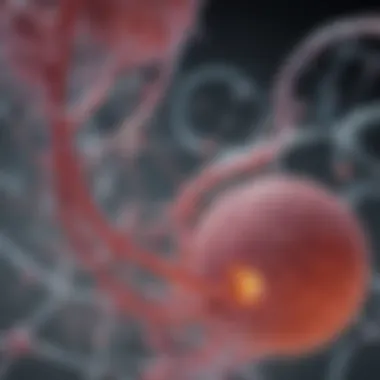
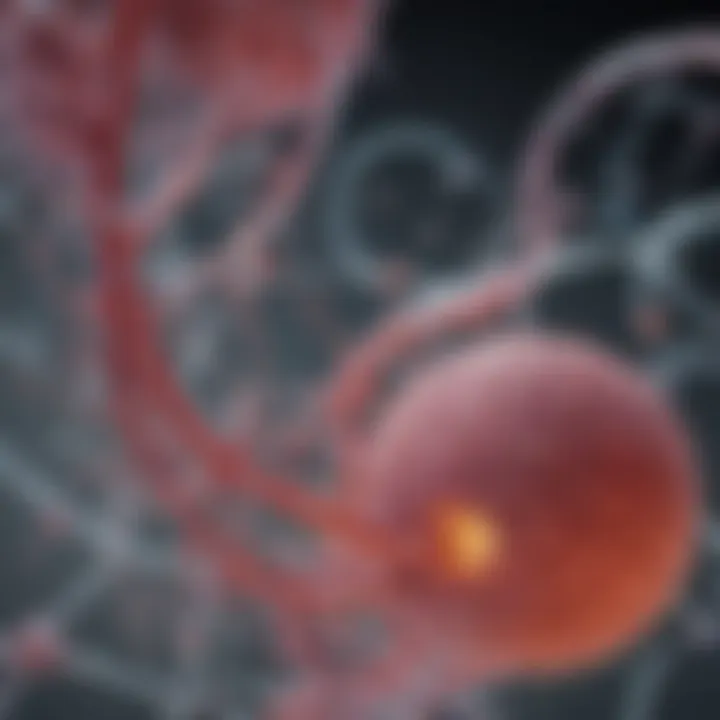
Resistance to Treatment
One of the most formidable challenges in cancer treatment is the phenomenon of resistance to therapy. Tumors can evolve and adapt, often leading to scenarios where standard treatments such as chemotherapy and targeted therapies become less effective over time. This resistance can be biological, stemming from genetic mutations within the cancer cells or due to environmental factors that favor the survival of more resilient cell populations.
Resistance can manifest in various ways, such as:
- Intrinsic resistance: Some tumors are inherently resistant to certain drugs, making initial treatment ineffective.
- Acquired resistance: Tumors may initially respond to treatment but later develop resistance through mutations or other adaptive mechanisms.
This ongoing battle between treatment and tumor evolution necessitates continuous research into understanding resistance mechanisms. Addressing this challenge is vital for improving treatment strategies and patient prognoses.
Side Effects and Quality of Life
Cancer treatments are often accompanied by a range of side effects that can severely impact patient quality of life. These effects may vary widely depending on the type of treatment and the individual’s health circumstances. Common side effects include nausea, fatigue, hair loss, and a compromised immune system, which can lead to infections.
The toll taken by these side effects can discourage patients and affect their willingness to adhere to prescribed therapies. In some cases, the pursuit of aggressive treatment might result in a decrease in quality of life, prompting discussions around balancing efficacy with tolerability.
To mitigate side effects, strategies such as supportive care or integrative therapies might be employed. For instance, medications can be utilized to manage nausea, while diet and exercise programs can bolster overall health and emotional well-being. An ongoing consideration in patient-centered care is how to maintain quality of life during and after treatment.
Economic and Access Issues
The economic factors surrounding cancer treatment are profound and potentially prohibitive. High costs associated with innovative therapies can create barriers to access for many patients. Not only are there direct costs related to medications and treatments, but indirect costs, such as lost income during treatment and travel expenses, can compound the financial burden.
Access to cutting-edge therapies is often unevenly distributed, meaning that patients in different geographic or socioeconomic contexts may experience disparities in treatment options. This inequality raises questions about how healthcare systems can allocate resources effectively to ensure equitable access to cancer care.
Efforts to address these issues include:
- Policy reforms: Advocating for better insurance coverage and healthcare policies that minimize out-of-pocket expenses for patients.
- Community support programs: Providing financial assistance or shared resource initiatives to help cover costs.
Ultimately, tackling the economic and access challenges in cancer treatment is essential. It is only through understanding and addressing these barriers that we can hope to ensure comprehensive and equitable cancer care for all patients.
Emerging Research in Cancer Treatment
Emerging research in cancer treatment is paramount in the ongoing battle against this complex disease. The landscape of cancer therapy is continually shifting as new findings unveil novel approaches to combat malignancies. This section emphasizes the significance of innovative methods that are under development, fostering hope for more effective treatments and a potential cure. Key elements include advances in technology, the integration of genetics, and tailored medicine specifically modified for individual patients. The benefits of emerging research are substantial, including potentially higher success rates and an improved quality of life for patients. Understanding these developments presents crucial insights into the future of oncology.
Genetic and Genomic Approaches
Genetic and genomic research represents a cornerstone in the future of cancer treatments. By comprehensively studying the genetic alterations that accompany different cancer types, researchers are devising new strategies that target these specific mutations. The utility of sequencing technologies, such as next-generation sequencing, is pivotal. This approach assists in identifying actionable mutations, guiding therapy decisions tailored to the patient's unique tumor profile.
One exciting aspect of this research is the development of therapies aimed at specific genetic mutations. For example, drugs such as osimertinib target mutations in the EGFR gene, providing a precise therapeutic approach.
This emphasis on genetic makeup allows for a more sophisticated understanding of cancer, propelling the concept of personalized medicine forward.
CAR-T Cell Therapy Innovations
CAR-T cell therapy marks a significant breakthrough in immunotherapy, especially for certain types of blood cancers. This therapy modifies a patient's T-cells to better attack cancer cells. In this process, T-cells are collected from the blood and engineered to recognize specific cancer antigens.
Clinical trials have consistently demonstrated encouraging results; for instance, studies involving Kymriah have shown high remission rates in patients with acute lymphoblastic leukemia. Despite these successes, several challenges remain, including predicting patient responses and managing side effects. Nevertheless, ongoing innovations in CAR-T therapy seek to expand its applicability to solid tumors, which could revolutionize how we treat various cancers.
Personalized Medicine and Cancer
The concept of personalized medicine tailors treatment based on individual patient characteristics, including genetic, biomarker, and phenotypic information. This approach shifts the paradigm from the traditional one-size-fits-all model to a more customized strategy that promises higher efficacy.
One practical application of personalized medicine is identifying biomarkers that predict responses to specific therapies. For example, HER2 testing in breast cancer allows oncologists to determine the suitability of trastuzumab for patients.
Additionally, personalized medicine fosters the potential for better patient outcomes and fewer side effects, as treatments can be aligned more closely with the patient’s unique situation. Although still in its early stages of widespread implementation, personalized medicine represents the forefront of modern cancer treatment research, offering hope for improved survival rates and quality of life.
"The fusion of genetics and targeted therapies is likely to redefine cancer treatments in the years to come, ushering in an era of bespoke oncology."
"The fusion of genetics and targeted therapies is likely to redefine cancer treatments in the years to come, ushering in an era of bespoke oncology."
Emerging research in cancer treatment is about more than just finding a cure; it is a commitment to enhancing patient-centered care, improving treatment efficacy, and optimizing patient quality of life.
The Question of a Cure for Cancer
The question of whether cancer can be cured is one of the most critical and complex issues in medical science. This inquiry does not only focus on the existence of a definitive cure; it encompasses various aspects of treatment, patient response, and research advancements. Understanding this question is essential for numerous reasons. First, it informs treatment strategies and influences patient expectations. Patients and their families often feel a sense of urgency while seeking solutions. Therefore, an accurate understanding of what constitutes a cure and the related implications is vital for effective communication between healthcare providers and patients. Moreover, this question drives research funding and initiatives. Addressing the quest for a cure can lead to innovations and breakthroughs in treatment methodologies.
Defining 'Cure' in Cancer Context


In the context of cancer, defining "cure" is not straightforward. Traditional definitions may not apply. Often, a cure is equated with complete remission, where the disease is eradicated, and there are no signs of cancer in the body. However, this perspective can be limiting. Instead, some experts advocate for a broader definition, taking into account long-term remission and the quality of life after treatment. While a patient may remain cancer-free for five years or more, it may not indicate an absolute cure. Persistent monitoring and check-ups are necessary, as relapses can occur. An essential aspect here is understanding that for some patients, living with cancer as a chronic disease may be the closest to a cure they can achieve.
Success Stories in Curing Cancer
Despite the complexities surrounding the cure for cancer, there have been remarkable success stories. Certain types of cancers have seen substantial advances in terms of curative treatments. For instance, some early-stage Testicular cancer cases report high cure rates, often exceeding 95%, through surgery and chemotherapy. Likewise, advancements in treatment protocols for Hodgkin's lymphoma have significantly increased the survival rate. The approval of CAR-T cell therapy for specific blood cancers is another promising development, where personalized immunotherapy has resulted in durable remissions for many patients. These successes highlight that while a universal cure remains elusive, some cancers can be managed effectively, leading to long-lasting remission.
Limitations and Realities
While the victories in treating certain cancers provide hope, they come with limitations that must be acknowledged. Not all cancer types are alike, and what works for one may not apply to another. For instance, Pancreatic cancer remains one of the most challenging forms of the disease, with survival rates stagnant over the years. Patients may face unique biological factors, such as genetic mutations, which affect their response to treatment. Additionally, socio-economic barriers like access to quality healthcare can also impede successful outcomes. There is often a disparity between those who have access to cutting-edge treatments and those who do not. Another stark reality involves the potential for resistance to treatment. Over time, cancer cells can adapt, making previously effective therapies less impactful. This emphasizes a critical need for continuous research and individualized treatment plans, as the landscape of cancer is ever-evolving.
"In the journey towards understanding and treating cancer, recognizing both milestones and limitations is essential for progress in the field."
"In the journey towards understanding and treating cancer, recognizing both milestones and limitations is essential for progress in the field."
Continuing to seek answers regarding the cure for cancer is not just about finding treatment options; it is about enhancing understanding, driving research, and ultimately improving patient outcomes.
Future Directions in Cancer Research
Cancer treatment continues to evolve, incorporating new methods and insights from various scientific fields. As our understanding of cancer deepens, researchers are identifying fresh pathways for innovation that hold promise for improved therapeutic outcomes. The examination of future directions in cancer research is vital because it may illuminate potential avenues for more effective treatments and, possibly, a greater chance of curing the disease. The intersection of technology, collaboration, and personalized medicine forms the basis of this discussion.
Technological Innovations
Technological advancements significantly impact cancer research and treatment. Emerging tools and techniques are changing the landscape by enhancing diagnosis, treatment delivery, and monitoring. For instance, artificial intelligence and machine learning are being integrated into cancer diagnostics. These technologies can analyze vast data sets, enabling quicker detection of abnormalities in imaging studies.
Moreover, precision medicine leverages genomic information to tailor treatment. Identifying mutations in specific tumors allows oncologists to utilize targeted therapies more effectively. Current examples include drugs designed to inhibit cancerous growth driven by certain genetic changes.
- Robotic Surgery: The introduction of robotic-assisted surgical systems improves the precision of operations, leading to quicker recovery times.
- Real-Time Monitoring: Wearable devices and telemedicine technologies facilitate ongoing patient monitoring, ensuring timely interventions if necessary.
The benefits of these technological innovations cannot be understated. They not only improve patient outcomes but also reduce costs associated with prolonged hospital stays and ineffective treatments.
Global Collaboration in Research
The complexity of cancer treatment necessitates global cooperation among researchers, clinicians, and institutions. Cross-border collaborations foster the sharing of resources, knowledge, and best practices that can accelerate the pace of discovery. Different cancer types may respond to treatments in unique ways based on genetic, environmental, and lifestyle factors, making collaborative efforts essential for understanding these variances.
"Global collaboration enhances the synergy of research, yielding better results than isolated efforts."
"Global collaboration enhances the synergy of research, yielding better results than isolated efforts."
Notable global initiatives, such as the Cancer Genome Atlas, demonstrate the impact of shared data on understanding cancer better. Similarly, organizations like the World Health Organization promote international partnerships that aim to unify resources and craft guidelines for cancer care.
- Establishing Data Sharing Protocols: Efforts are underway to standardize how information on clinical trials and patient outcomes is shared among countries.
- Funding Initiatives: Many governments and institutions are pooling funding to support large-scale studies that would be too costly for individual entities.
Collaboration across borders amplifies the research efforts, allowing scientists to tackle the disease collectively. Ultimately, this fusion of knowledge could lead to more robust solutions, benefiting researchers and patients alike.
Closure
The significance of the conclusion in this article lies in synthesizing insights drawn from the multifaceted nature of cancer treatment and the quest for a cure. This section serves to encapsulate the knowledge gained, emphasizing how intricate the journey through cancer care can be for patients and healthcare professionals alike.
Summary of Findings
In reviewing the vast landscape of cancer treatment, several key points emerge:
- Understanding of Cancer Types: Different types of cancer exhibit distinct biological behaviors and respond variably to treatments. Gathering insights about specific cancer forms is crucial for tailoring effective intervention strategies.
- Current Treatment Modalities: Existing treatments such as chemotherapy, radiation, and immunotherapy have shown considerable success. However, understanding their limitations and side effects is equally important to enhance patient quality of life.
- Emerging Therapeutic Techniques: Innovative research in genetic approaches and personalized medicine is paving paths towards more effective treatments. There is growing optimism as scientists work to refine these methods.
- Dimensions of a Cure: Defining a cure involves more than just the absence of cancer. It also encompasses the overall well-being of individuals post-treatment, hence the focus on holistic approaches in cancer care is gaining traction.
"The pursuit of a definitive cure for cancer is not just a scientific journey, but a profoundly human one, touching lives and communities."
"The pursuit of a definitive cure for cancer is not just a scientific journey, but a profoundly human one, touching lives and communities."
The Continuing Pursuit of Cure
The journey towards finding a definitive cure for cancer is far from complete. Ongoing research and clinical trials continue to yield valuable data, providing insights that were previously inaccessible. Patients and advocates play crucial roles in this ongoing pursuit. Their experiences and challenges often inform research priorities and help shape treatment pathways.
Furthermore, global cooperation among researchers can amplify efforts to tackle the complexities of cancer. This collaboration, coupled with technological advancements, ensures that novel ideas are explored. Patient-centered approaches can redefine traditional paradigms of treatment and survivorship.
In summary, while the answer to the question of a cure remains elusive, the collective efforts of the scientific community, combined with personal stories from those affected, fuel this important quest. The journey is laden with hope, challenges, and the belief that one day we may emerge with a substantial and global understanding of what a cancer cure could truly entail.



